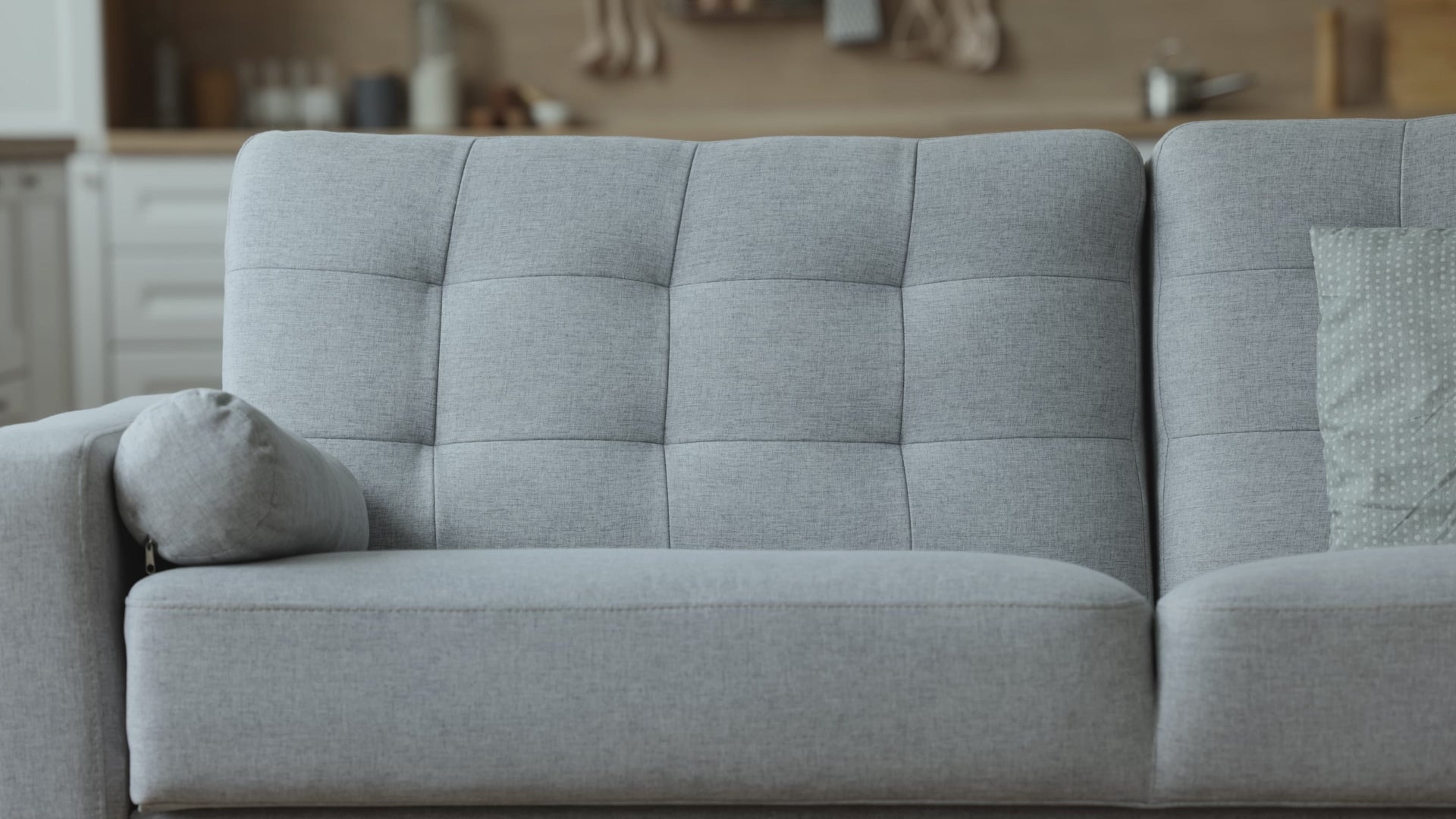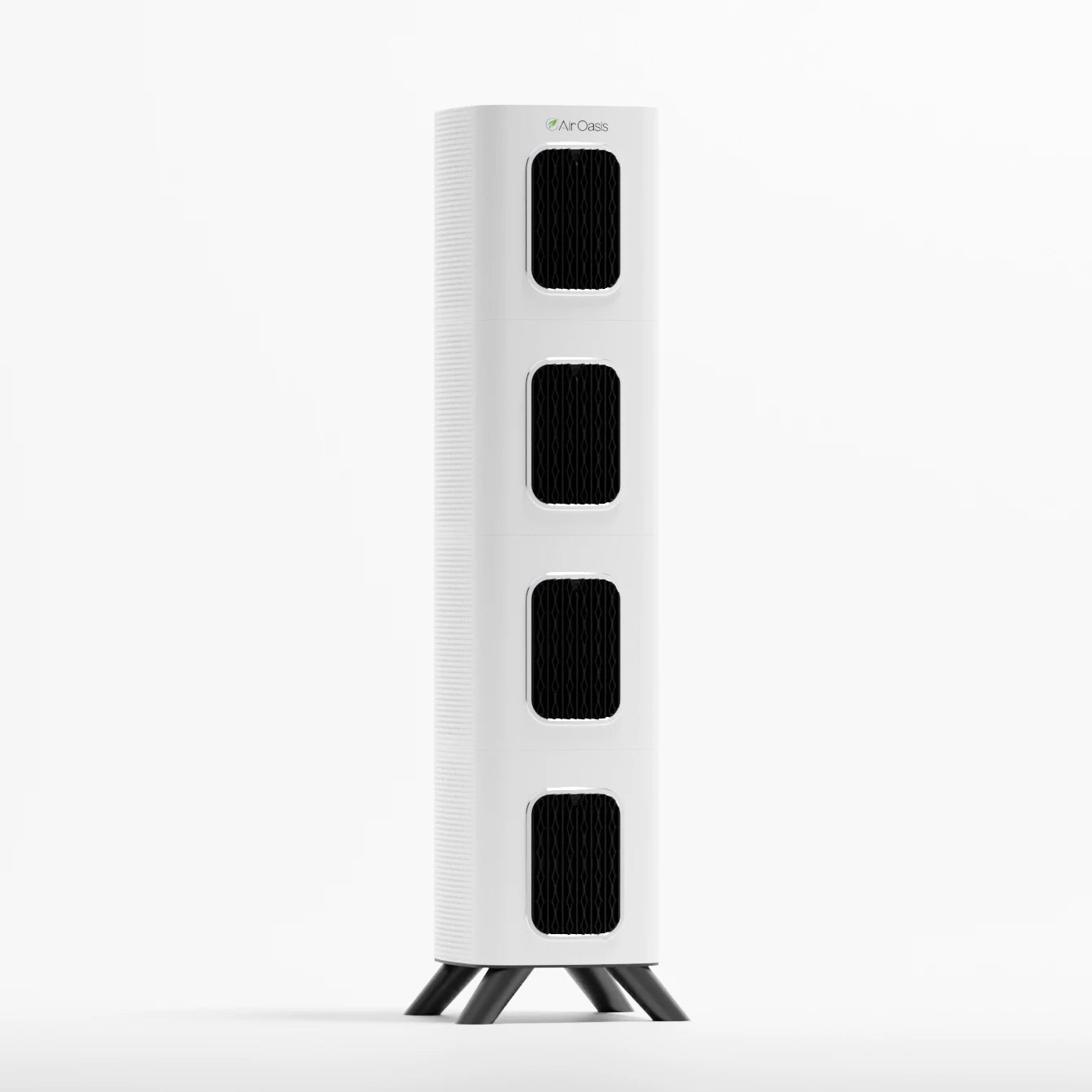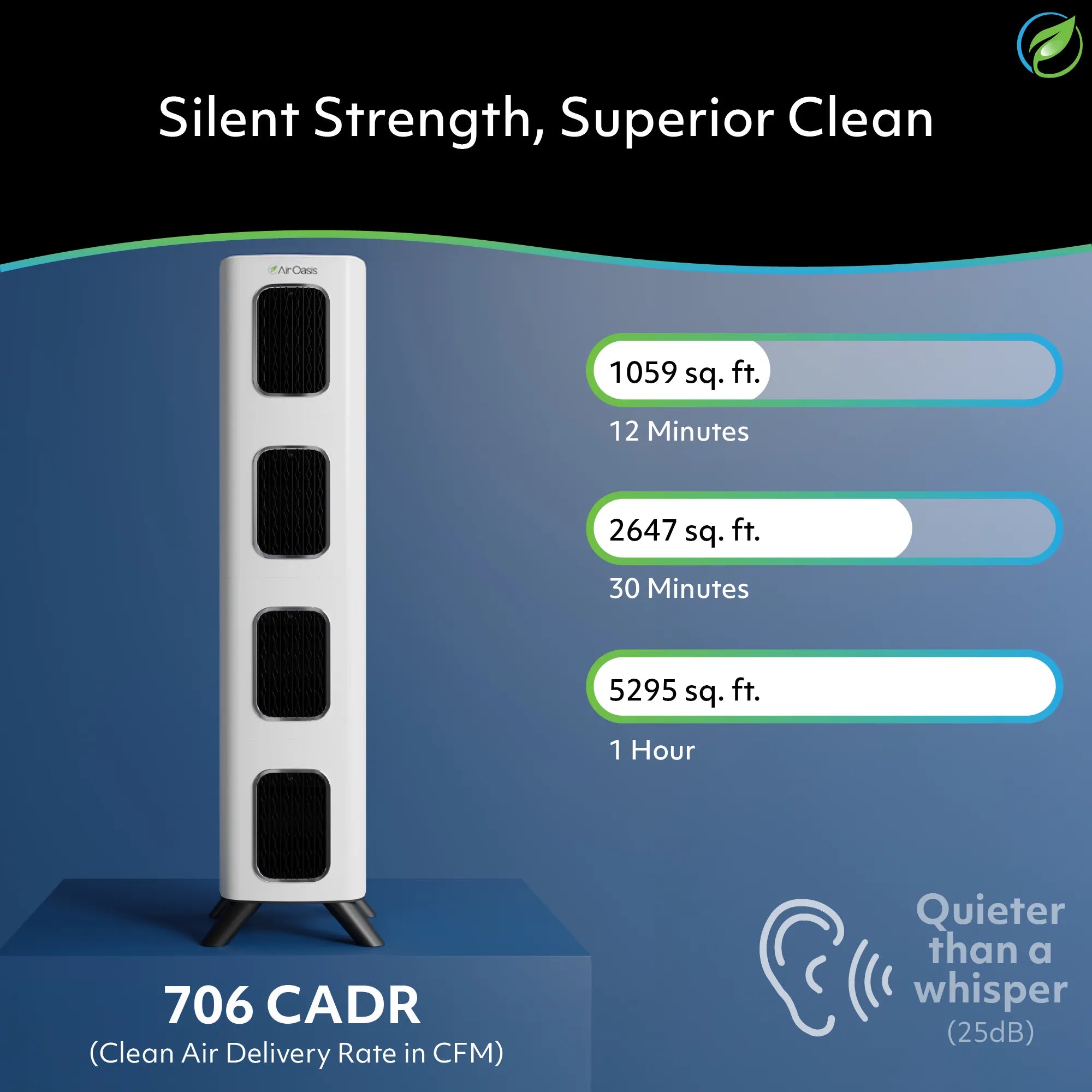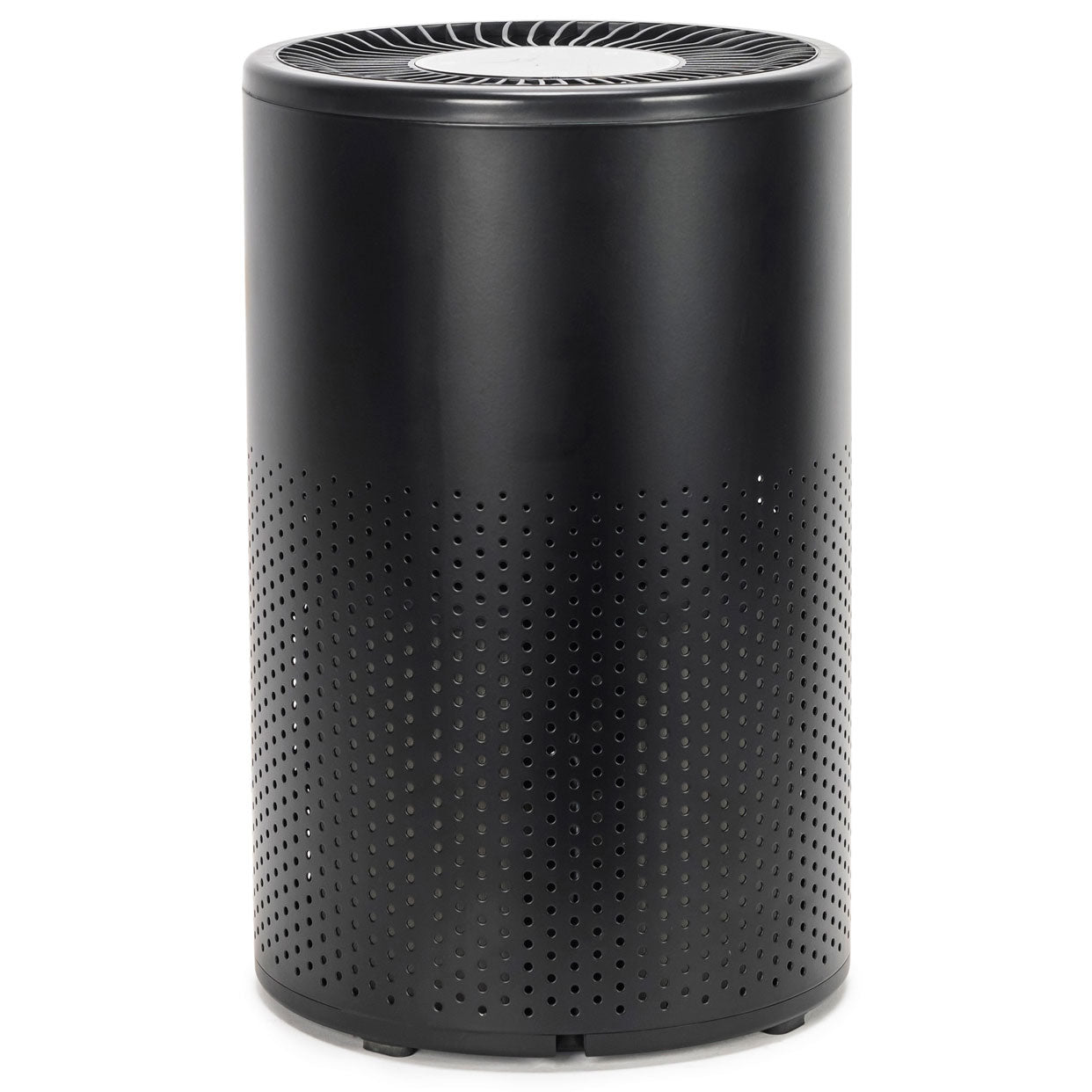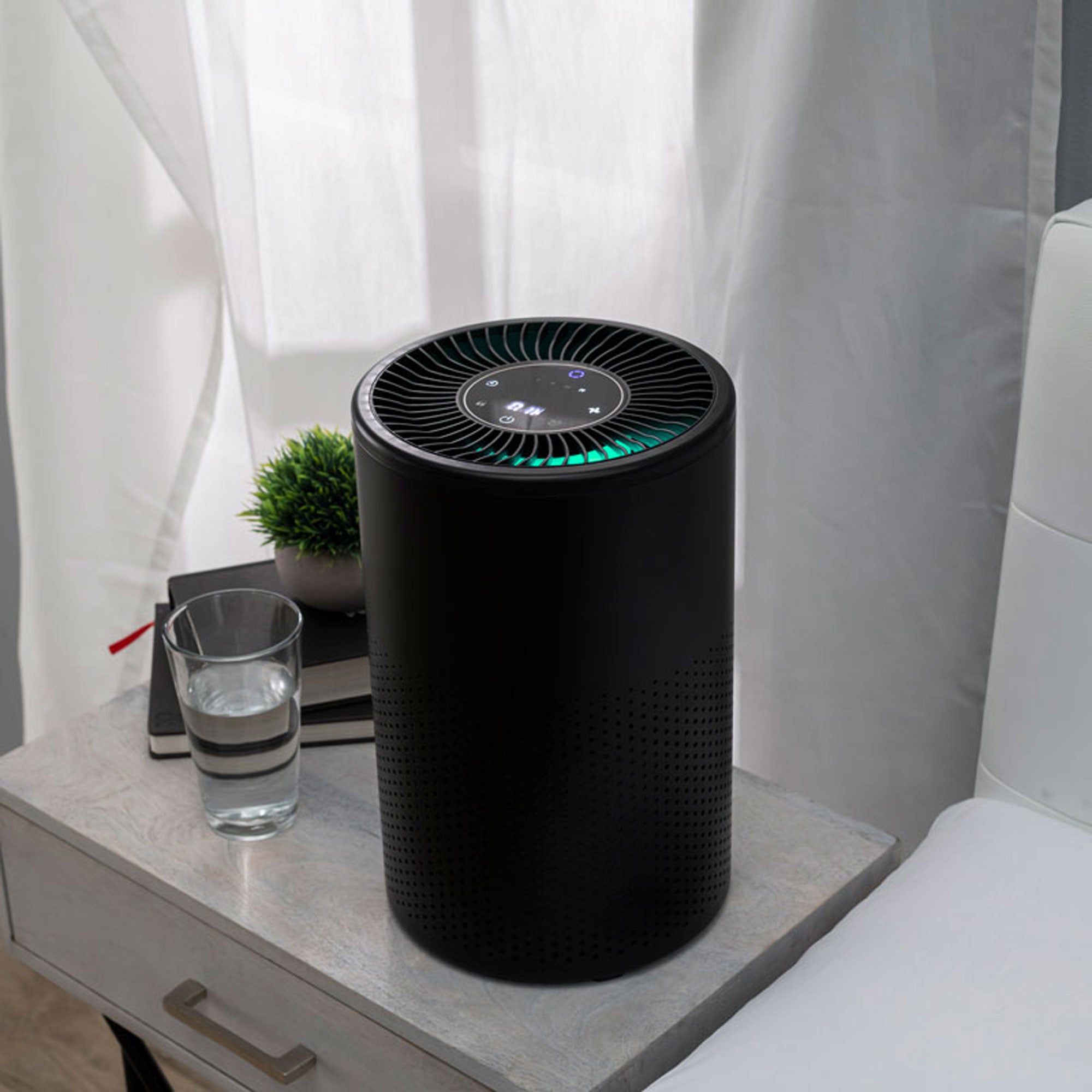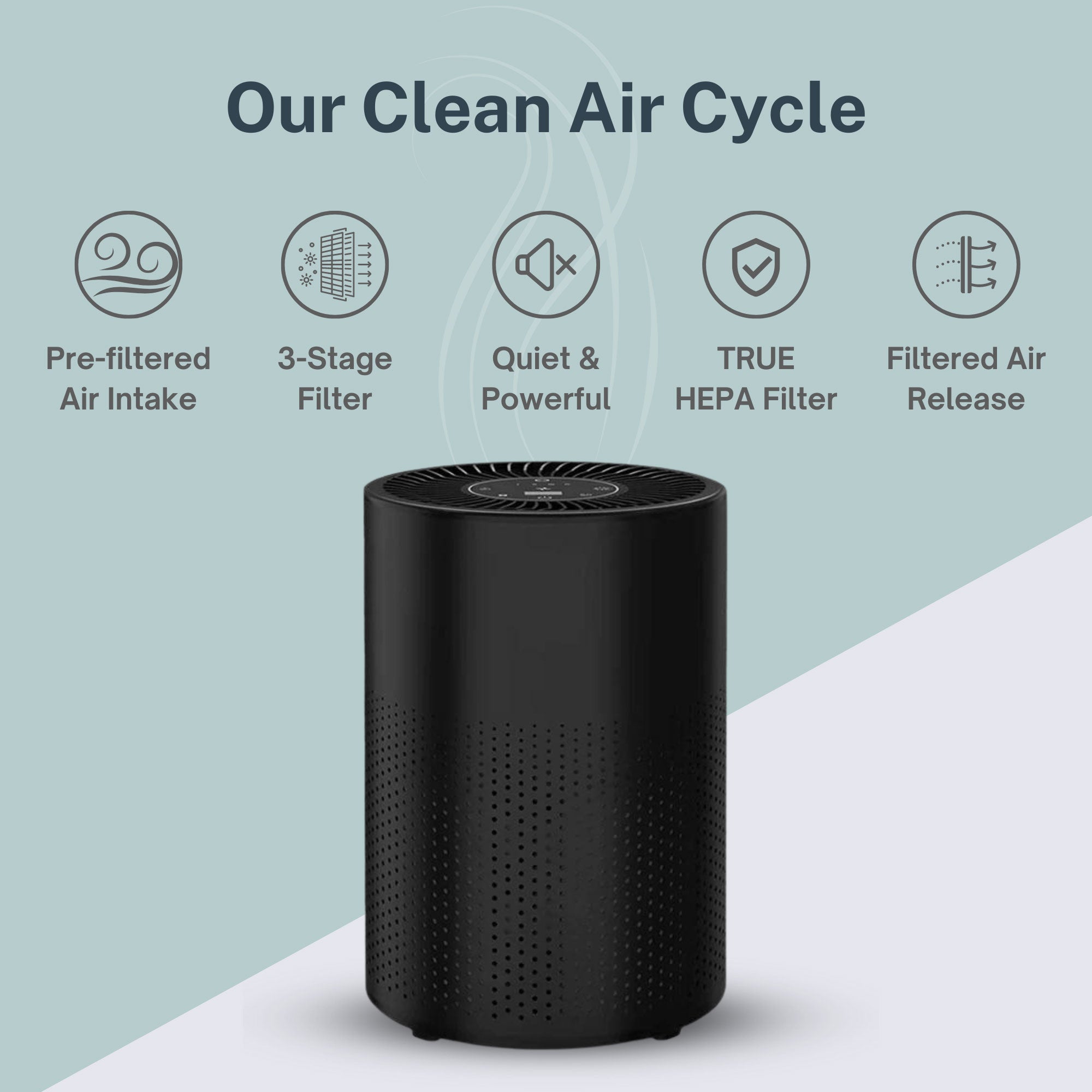Clean indoor air affects our health more than we realize. We don’t often consider how our indoor air could be contaminated with toxins, allergens, and mold spores.
Mold spores, microscopic particles released into the air by mold, are more than just a visual nuisance on walls or ceilings. They potentially threaten our health, triggering allergies and respiratory issues and exacerbating existing conditions. From basements to bathrooms, mold can thrive in various indoor environments, creating an unseen menace for the whole family.
Exposure to mold spores shouldn’t be taken lightly. The health risks of mold range from mild respiratory tract irritation to severe respiratory issues, including CIRS and mold toxicity. The adverse effects of mold make it crucial to address this issue proactively and invest in solutions that ensure the air we breathe is clean.
Enter: air purifiers.
Air purifiers are pivotal in creating a healthy indoor environment. Not all air purifiers are created equal, and when combating mold spores, choosing the right technology is vital.
Let’s explore the dangers of mold spores and the technology that makes certain air purifiers stand out in the battle against unhealthy indoor air.
Understanding Mold Spores
Mold spores are invisible to the naked eye but wield a powerful impact on our indoor environment. These tiny, lightweight particles serve as the reproductive units of mold, enabling it to spread and colonize new areas. When released into the air, mold spores can travel far and wide, settling on surfaces and thriving in damp or humid conditions. While mold itself may appear as unsightly patches on walls or ceilings, the airborne spores pose a more insidious threat to our health.
The Health Risks of Mold Exposure
Mold spores can trigger a range of health issues, particularly for individuals with allergies or respiratory sensitivities. Common symptoms of mold exposure include sneezing, coughing, watery eyes, and skin irritation. Prolonged exposure can lead to more severe respiratory conditions, exacerbate asthma, and compromise the immune system.
Understanding the potential health risks associated with mold spores underscores the importance of proactive measures to mitigate their presence in our living spaces.
Sources of Mold in Indoor Environments
Mold is resilient and thrives in environments with moisture and organic materials. Common sources of mold in indoor spaces include damp basements, leaky roofs, poorly ventilated bathrooms, and water-damaged areas. Household activities like cooking, showering, and even houseplants can contribute to elevated humidity levels, creating perfect conditions for mold growth. Identifying and addressing these sources is essential for effective mold prevention and a healthier indoor environment.
Tackling mold spores in your home requires a multifaceted approach, and air purification is key in creating a mold-free, breathable space.
The Need for Air Purifiers
Mold spores, despite their microscopic size, can have a significant impact on our well-being. The challenge lies in visually detecting mold and addressing the airborne spores that circulate through our homes and workplaces.
While regular cleaning and mold remediation efforts may eliminate visible mold growth, they often fail to address the broader issue of airborne mold spores. Traditional cleaning methods may inadvertently release spores into the air, contributing to contamination.
This is where air purifiers complement surface cleaning efforts–they actively remove mold spores from the air, providing a comprehensive solution to mold-related indoor air quality concerns.
Health Benefits of Air Purifiers for Mold Spores
Investing in a high-quality air purifier specifically designed to target mold spores offers a range of health benefits. These devices continuously filter and capture airborne mold particles, reducing the overall spore count in the indoor environment.
Consistent indoor air purification ensures that mold spores are kept at bay, contributing to a cleaner, more breathable living environment and reducing the risk of respiratory issues, allergies, and asthma flare-ups.
Prevention is Key: Proactive Measures with Air Purifiers
Air purifiers work to clear up existing mold issues and are also a proactive measure for mold prevention. By removing mold spores from the air before they settle and proliferate, air purifiers act as a barrier against the development of mold colonies.
A preventative approach is particularly valuable in areas prone to high humidity or where past mold problems have occurred, providing peace of mind and a continuous defense against the threat of mold spores.
Top Features to Look for in Air Purifiers for Mold
Several features and technologies work together to provide the best protection against the spread of mold spores.
Let’s look deeper into those features.
High-Efficiency Particulate Air (HEPA) Filters
One of the foundational features an air purifier for mold should have is a HEPA filter. These filters are designed to capture particles as small as 0.3 microns, making them highly effective in trapping mold spores.
HEPA filters are pivotal in reducing the overall spore count in the air.
UV-C Light Technology
Ultraviolet (UV-C) light technology is a game-changer in the battle against mold spores. UV-C light can disrupt the mold spores’ DNA, rendering them incapable of reproducing. Air purifiers using UV-C light provide an additional layer of defense when used with HEPA filters. This dual approach ensures both captured and potentially missed spores are neutralized.
Activated Carbon Filters
While HEPA filters capture mold spores, activated carbon filters effectively absorb odors and volatile organic compounds (VOCs) associated with mold growth. Mold-infested areas often carry a musty smell, and activated carbon helps eliminate those odors, providing a more pleasant and fresh indoor environment.
Airflow and Coverage Capacity
The effectiveness of an air purifier is closely tied to its airflow rate and coverage capacity. Choose a purifier with sufficient airflow to circulate and effectively filter the air in the designated space. Consider the square footage coverage of the purifier to ensure it can handle the room size or area where mold spore removal is needed. Properly sizing the air purifier ensures optimal performance in capturing and neutralizing mold spores throughout the space.
Noise Levels and Energy Efficiency
Practical considerations such as noise levels and energy efficiency should be considered. Air purifiers that operate quietly are ideal for bedrooms, offices, or other areas where a peaceful environment is necessary.
Energy-efficient models contribute to cost savings and environmental sustainability. Strike a balance between effective mold spore removal and the practical aspects of noise levels and energy consumption to ensure seamless integration of the air purifier into your daily life.
Banish Airborne Mold Spores with Air Oasis
Safeguarding indoor air quality is not a luxury–it’s necessary for overall wellness. Mold spores wield the potential to impact our health, and air purifiers are the first step toward addressing the threat.
Ready to take charge of your indoor air quality? The Air Oasis iAdaptAir line of air purifiers combines powerful, state-of-the-art purification technology with easy maintenance for a simple solution for mold spore removal.
The power to transform your indoor air quality is in your hands–shop iAdaptAir today.










